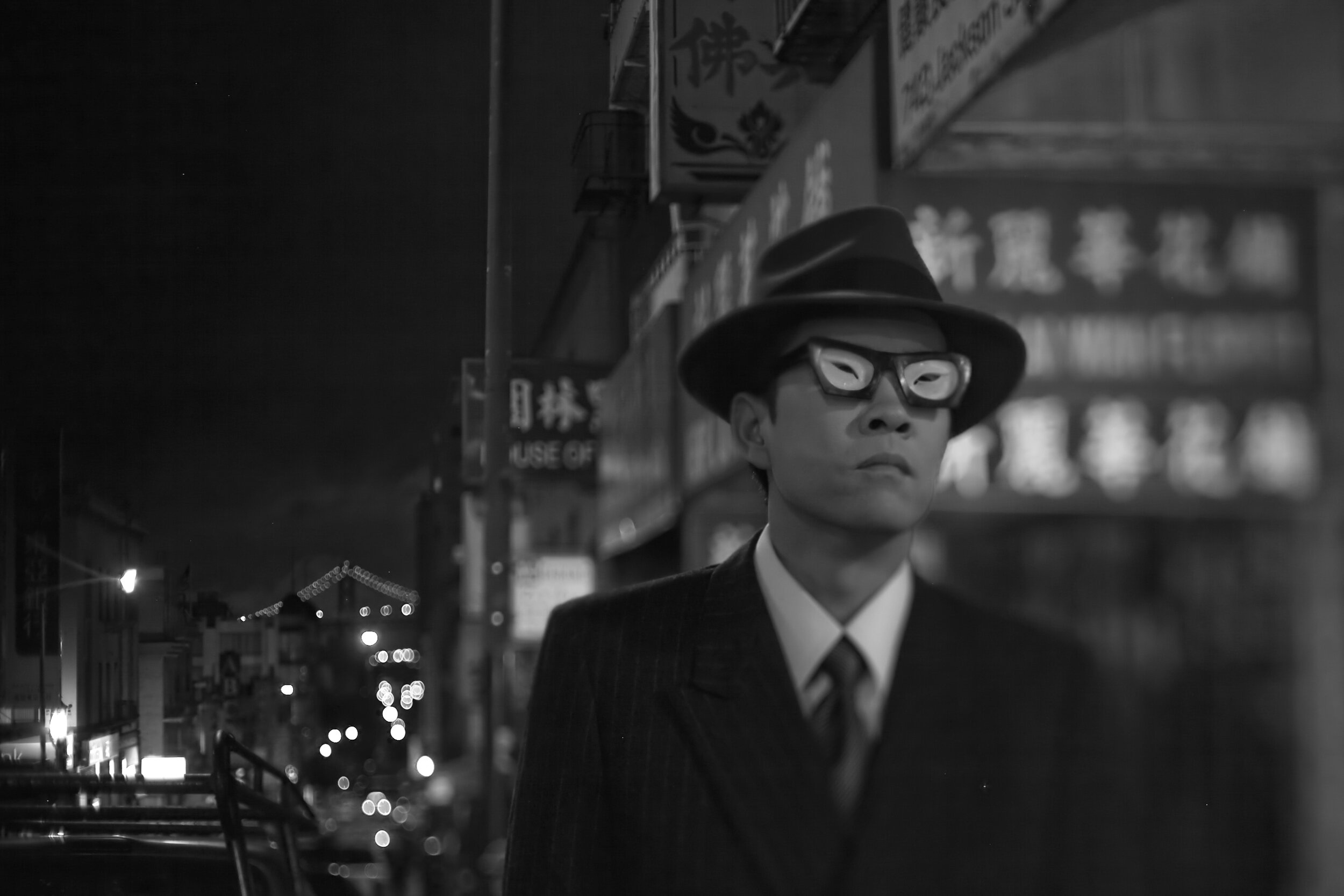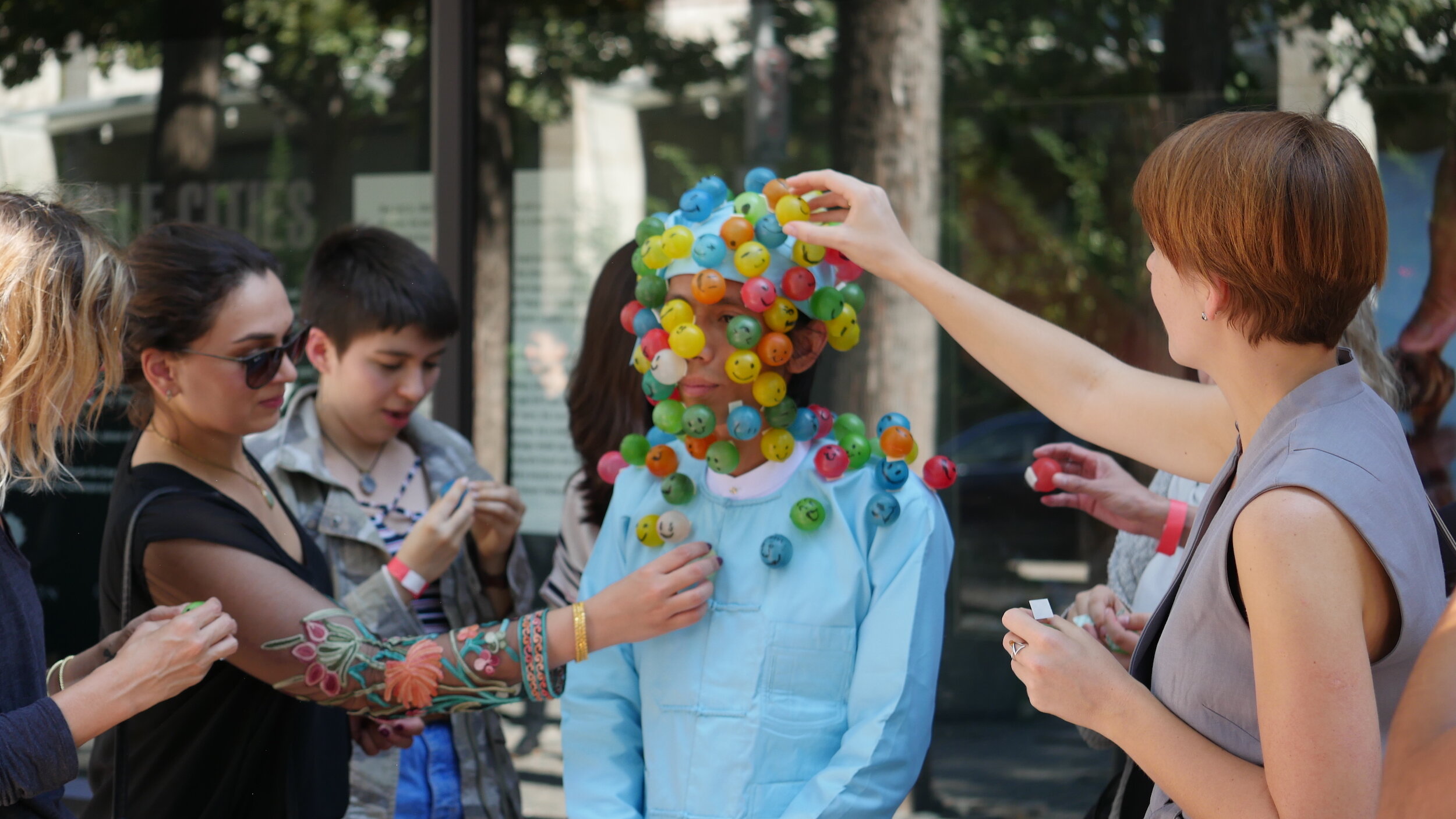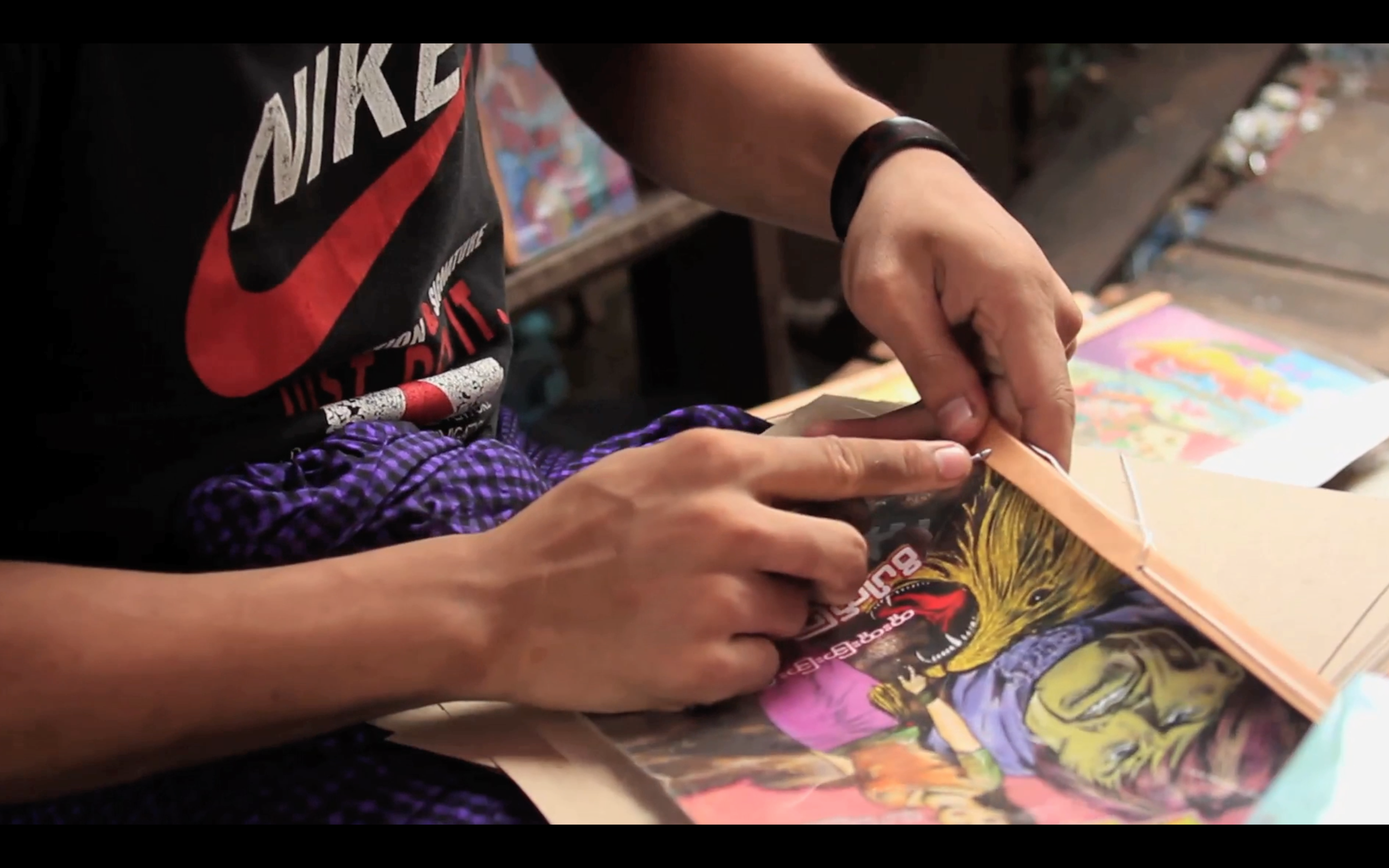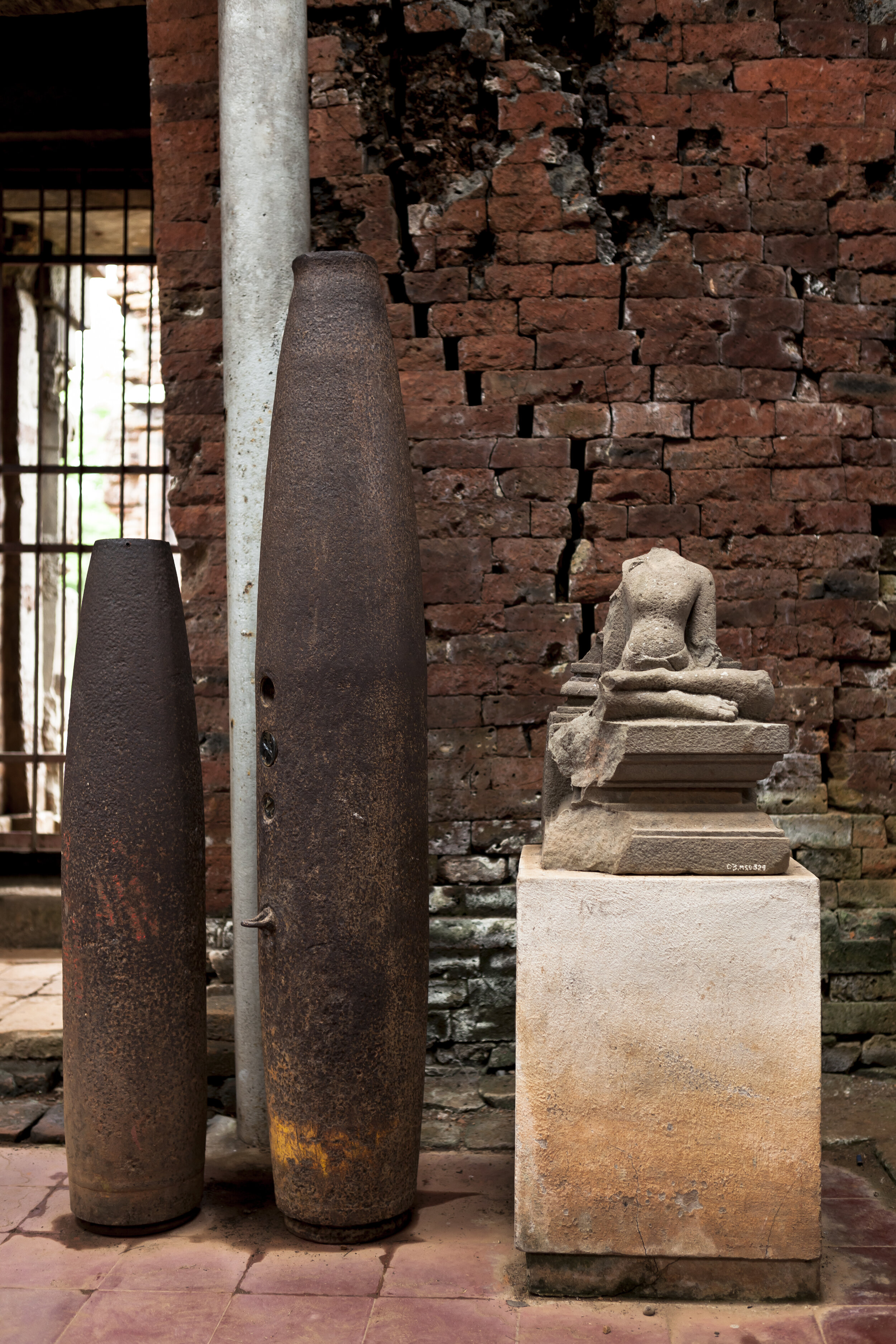
Invisible Cities
On view September 29 – December 17, 2017 at the Crow Museum of Asian Art and Dallas Contemporary
The Crow Collection of Asian Art, in partnership with Dallas Contemporary and the Moving Image Archive for Contemporary Art: MIACA (Hong Kong), is pleased to announce the presentation of Invisible Cities, an exhibition and screening series showcasing more than 20 contemporary video works by renowned and emerging artists from China, Japan, Hong Kong, the Philippines, Singapore, South Korea, Taiwan, Thailand, Myanmar and Vietnam. Exhibited as a series of video installations and screenings at the Crow Collection of Asian Art and Dallas Contemporary, these pivotal works represent recent key developments in moving image art in Asia. Invisible Cities runs Friday, Sept. 29, through Sunday, Dec. 17, 2017, at the Crow Collection of Asian Art and Dallas Contemporary.
Presented as a compilation of fragmentary urban images, this project addresses perceptions of various Asian cities in the collective mind. In their vignettes, artists reference traces of colonialism, globalization, and the political aspects of urban development to examine the concept of the “perpetual foreigner” within contemporary cosmopolitan culture. From the stories of vanished cities of the past (Panduranga), to the destroyed cities of the present time (Fukushima), the film narratives encapsulate the memory of specific sites and individuals’ interactions with different landscapes.
By capturing the splendor and tensions of real cities, the project also questions concepts of Post-Exoticism and Otherness in Asia. At the Crow Collection of Asian Art, the work of Yangon, Myanmar-based artist Moe Satt collects stories through the hands of others, while Singapore-born, Berlin-based artist Ming Wong examines the shifting nature of identity through the re-enactment of archetypal characters in world cinema. At Dallas Contemporary, Japanese collective Chim↑Pom presents momentous artworks which document their exploration of cohabitation and survival, and ultimately a focus on historical and cultural continuity between symbolic sites and cities in Japan and worldwide.
Celebrating video art as lingua franca of the contemporary world, Invisible Cities employs this globally accessible medium to capture the richness and diversity of surrounding environments and to prioritize an indigenous perception of the world rather than a “Western perspective.” Inspired by Italo Calvino’s novel Invisible Cities from which the project’s title is derived, this multi-institutional collaboration honors exchange over difference and cultural hybridity over “otherness” by inviting viewers to take a look through the lens of authentic experience.
Invisible Cities will be accompanied by an illustrated exhibition guide featuring participating artist bios, statements and curatorial conversations. The guide will be available at the Crow Collection of Asian Art and at Dallas Contemporary.
This project is organized by Hitomi Hasegawa, Director, Moving Image Archive for Contemporary Art: MIACA (Hong Kong); Lilia Kudelia, Assistant Curator, Dallas Contemporary; and Jacqueline Chao, Curator of Asian Art, Crow Collection of Asian Art.
Participating artists and collectives (bios available here):
Akita, JAPAN: Tadasu Takamine
Bangkok, THAILAND: Taiki Sakpisit
Beijing, CHINA: Sun Xun
Berlin, GERMANY: Ming Wong
Fukushima, JAPAN: Bontaro Dokuyama, Kota Takeuchi
Guangzhou, CHINA: Zhou Tao
Hanoi, VIETNAM: Nguyen Trinh Thi
Hong Kong, S.A.R.: Come Inside, Ellen Pau, Leung Chi Wo, Wong Ping
Manila, PHILIPPINES: Martha Atienza
Paris, FRANCE: Momoko Seto
Seoul, SOUTH KOREA: Minouk Lim
Singapore, SINGAPORE: Ho Rui An, Ho Tzu Nyen
Tainan, TAIWAN: Kai-Chun Chiang
Tokyo, JAPAN: Yu Araki, Chim↑Pom, Kyun Chome, Hikaru Fujii,
Yangon, MYANMAR: Moe Satt
Schedule of Events:
Thursday, Sept. 28, from 7-10 p.m. Invisible Cities Members Opening Reception at Dallas Contemporary. Open to Members of the Crow Collection of Asian Art and Dallas Contemporary
Thursday, Sept. 28 – Sunday, Oct. 22, 2017. Invisible Cities on view at Dallas Contemporary
Screening Program: Body and Memory
Featuring works by Nguyen Trinh Thi, Wong Ping, Hikaru Fujii, Martha Atienza, Taiki Sakpisit, Minouk Lim, Ho Tzu Nyen
Thursday, Sept. 28 – Sunday, Oct. 15, 2017. Moe Satt “Hands Around Yangon” installation on view at the Crow Collection of Asian Art, Flora Street windows
Saturday, Sept. 30, at 2 p.m. Chit chat with Chim↑Pom collective about their exhibition at Dallas Contemporary moderated by Jason Waite, independent curator, and Lilia Kudelia, Dallas Contemporary Assistant Curator. Free admission.
Saturday, Oct. 14, from 1-6 p.m. Invisible Cities Forum at the Crow Collection of Asian Art, Grand Gallery. Featuring an exclusive screening and talk by Ho Tzu Nyen, live performances by Moe Satt, Ho Rui An and Come Inside, and a panel discussion with the Invisible Cities curators. Free admission for Members of the Crow Collection of Asian Art and Dallas Contemporary.
Tuesday, Oct. 17 - Sunday, Oct. 29. Ming Wong “After Chinatown” installation on view at the Crow Collection of Asian Art, Flora Street windows
Tuesday, Oct. 24, from 6:30-8:30 p.m. Exclusive screening of Nguyen Trinh Thi’s short films Letters from Panduranga (2015) and Vietnam The Movie (2016) at the Crow Collection of Asian Art, Grand Gallery. Free admission for Members of the Crow Collection of Asian Art and Dallas Contemporary.
Tuesday, Oct. 24 – Sunday, Nov. 19. Invisible Cities exhibition at Dallas Contemporary
Screening Program: Cityscape
Featuring works by Leung Chi Wo, Kai-Chun Chiang, Sun Xun, Moe Satt, Yu Araki, Zhou Tao, Ellen Pau
Tuesday, Nov. 21 – Sunday, Dec. 17. Invisible Cities exhibition at Dallas Contemporary
Screening Program: Fukushima After Fukushima
Featuring works by Kyun Chome, Bontaro Dokuyama, Chim↑Pom, Momoko Seto, Tadasu Takamine, Kota Takeuchi
Installations on view at the Crow Collection of Asian Art, Flora Street windows, curated by Jacqueline Chao:
MOE SATT
Hands Around In Yangon
On view September 29-October 15, 2017
Moe Satt lives and works as an artist and curator in Yangon, Myanmar. His Hands Around In Yangon (2012) is a collection of video footage that focuses on hands in motion.
From the artist: “In the video, I recorded the hand movements of people around me: from laborers working on the streets and in the markets to friends and local artists. Do you think hand gestures can tell a story…about sadness, success, and so on? There are moving hands, working hands, eating hands, communicating hands. I collect many stories about the hands of others.”
Installed next to the video work is part of Moe Satt’s photographic series, Bicycle Tyre Rolling Event from Yangon (2013). It documents the artist playing a favorite game of children in Myanmar. Children will compete to see who can best control the tire, and who can roll it quickly and steadily. Under military regime for the past 50 years, the country’s citizens experienced extreme impoverishment and isolation. As a result, many children in Myanmar did not have access to foreign-made toys and would often creatively fashion toys and games from locally found and recycled materials. In this performance, the artist rolled a bicycle tire in and around the city of Yangon and through its well-known historical sites.
About the Artist
Moe Satt (b. 1983) started creating art after graduating from East Yangon University in Myanmar with a degree in Zoology in 2005. He is part of a new generation of emerging Burmese artists. In 2008, he founded and organized Beyond Pressure, an international festival of performance art in Myanmar. He has participated in live arts festivals throughout Asia and Europe and has been invited to serve as the resident artist at several locations, including International Residence at Recollets (Paris, 2015) and IASPIA (Sweden, 2016).
His work has been included in several major exhibitions, including the Busan Biennale (2012), CAFA Biennale (Beijing, 2013), Concept Context Contestation: Collective-Driven Art In Southeast Asia (Bangkok, 2013), and The Journal of the Plague Year (South Korea, 2014). The artist has curated exhibitions such as On/Off: Myanmar Contemporary Art Event, The Almaz Collective (Vietnam, 2010); Forward/Backward: 8 Myanmar Second-Wave Contemporary Artists, H Gallery (Thailand, 2011); The Mirror_ reflecting society, TS1 Gallery (Myanmar, 2014); and Silent for a While: Contemporary Art from Myanmar, 10 Chancery Lane (Hong Kong, 2016).
MING WONG
After Chinatown
On view October 17-29, 2017
Singapore-born, Berlin-based artist Ming Wong examines the shifting nature of identity through the re-enactment of archetypal characters in world cinema. In his video pieces, installations, and performances, Wong works with cinema and popular culture to consider how concepts of culture, gender, and representation are constructed, reproduced, and circulated. Through imperfect translations and reenactments, Wong uncovers the slippages that haunt ideas of “authenticity” and “originality.” Wong’s video installations often remake classic films, with the artist deliberately miscasting himself and playing all of the characters, regardless of gender or ethnicity.
About the Artist
Upon his graduation from NAFA in 1995 with a Diploma in Fine Art, majoring in Chinese Art, Ming Wong (b. 1971) pursued studies at the Slade School of Art, University College London, obtaining his Master of Fine Arts in Fine Art Media in 1999. He has showcased his works in numerous screenings and solo and group exhibitions at prestigious locations including the Museum of Contemporary Art Tokyo, the Museum of the Moving Image in New York, House of World Cultures in Berlin, and the National Taiwan Museum of Fine Arts. His works have been shown in many parts of the world, such as Australia, Austria, Canada, China, France, Hong Kong, Indonesia, Italy, Japan, Netherlands, Portugal, South Korea, Spain, Taiwan, Turkey, the United States of America and Singapore. He won a Special Mention at the 53rd Venice Biennale for his video installation, Life of Imitation.
MIACA, the Moving Image Archive of Contemporary Art, is an organization dedicated to the conservation and promotion of moving image works by Asian artists. Directed by Hitomi Hasegawa, MIACA started its activity in 2006 in Yokohama, Japan and is currently based in Hong Kong. The institution organizes exhibitions, temporary video libraries, talk events, and lectures by artists and art professionals. Invisible Cities will be MIACA’s first collaboration with U.S.-based museums.
Dallas Contemporary is a non-collecting art museum presenting new and fresh ideas from regional, national, and international artists. Modeled after European art centers and located in an industrial building in the Design District, Dallas Contemporary is one of the few institutions of its kind in the United States, offering temporary exhibitions, important lectures, and seminal learning programs.
Header Image: Ming Wong, Still from After Chinatown, 2012. Courtesy the artist, Vitamin Creative Space, Guangzhou, and carlier I gebauer, Berlin.
Moe Satt, Smile Performance, 2017. Invisible Cities Forum at the Crow Collection of Asian Art in Dallas, TX
View of Moe Satt, Hands Around In Yangon, Installation in the Flora Street Windows, Crow Collection of Asian Art
Moe Satt. Still from Hands Around Yangon, 2012. Courtesy of the Artist.
Nguyen Trinh Thi. Still from Letters From Panduranga, 2015. Courtesy of the artist.
Chim↑Pom. LIBERTAD, 2017 © Chim↑Pom. Courtesy of Chim↑Pom Studio and MUJINTO Production, Tokyo.
Taiki Sakpisit. A Ripe Volcano, 2011. Courtesy of the artist.





